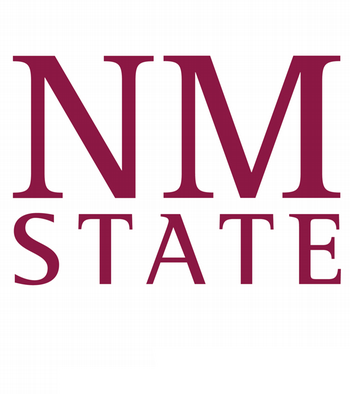
Amador Family
Martin Amador was born in Paso del Norte, Chihuahua, Mexico, probably on November 10, 1836, to Francisco Amador and Gregoria Rodela. Following the death of his father, he and his mother moved to Doña Ana, New Mexico in 1848 or 1849. From an early age, Martin possessed a seemingly innate intelligence and business sense. As both the American and Mexican populations of Doña Ana burgeoned, new towns were established nearby in 1849 to handle the overflow – Las Cruces on the United States side of the Rio Grande, and Mesilla on the Mexican side. Martin and his family decided to accept U.S. citizenship and settle in Las Cruces.
Martin secured work at Fort Fillmore, a U.S. military post established south of Las Cruces in 1851. He began working for the fort’s sutler, or civilian merchant, where he gained knowledge of business practices, as well as the English language. Martin’s talents were recognized by Hugh Stephenson, an American businessman married to a Mexican woman from Paso del Norte, who was operating a silver mine and smelter near Fort Fillmore. Martin soon was appointed paymaster and smelter manager by Stephenson. He continued to cultivate relationships with both American and Mexican businessmen and from these relationships, Amador learned the skills that would make him one of the leading entrepreneurs of the region by the 1870s.
Leveraging close relationships with Americans and Mexicans, as well as his knowledge of English and Spanish, Martin Amador placed himself in a unique position to broker between cultures. He forged ties with one of the most prominent business and political families in Paso del Norte when he married Refugio Ruiz in 1861. The couple lived in Paso del Norte during the U.S. Civil War, where Martin became business partners with his father-in-law, Juan N. Ruiz. After the birth of their first daughter, Emilia, in 1863, the Amadors moved back to Las Cruces and Martin began his rise in the business and social worlds. He traded on both the Santa Fe and Chihuahua trails, hauled freight across the region, provided goods to U.S. military posts, established mercantile stores, liveries, and a successful hotel. He increased his land holdings and became active in politics, education, and other social causes.
The Amadors had five daughters and three sons who survived to adulthood, born between 1863 and 1886. The Amador children grew up in a completely bi-lingual, bi-cultural and bi-national environment, frequently crossing the international boundary and dividing their time living, working, and celebrating life’s milestones among family and friends in Las Cruces, El Paso, Texas, and Paso del Norte, Chihuahua, Mexico (renamed Ciudad Juárez in 1888). Martin and Refugio Amador made sure their children received fine Catholic educations and were refined in manners, art, music, and all the trappings of their position in society.
Martin Amador died in Las Cruces in 1903, and Refugio four years later in 1907. Their children lived mostly in the region their entire lives, with subsequent generations moving farther afield. Some descendants continue to live in Las Cruces. The Amadors played an important role in the development of Las Cruces and the family’s impact still can be seen in the names of streets, buildings, and businesses in the area.
Play video featuring five portraits of the Amador Family and one image of the Amador Hotel. The video has no audio.


